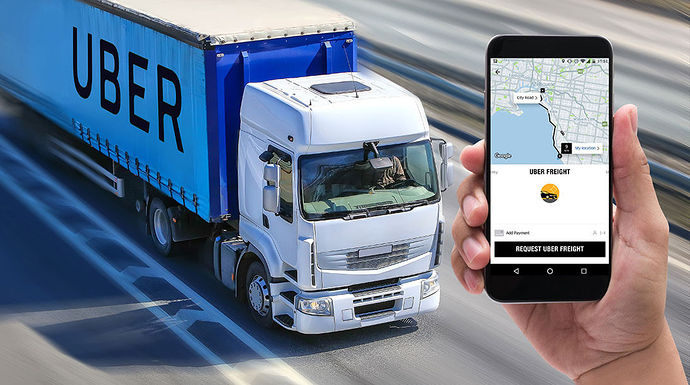 Photo via RideSharingForum.com
Photo via RideSharingForum.com
Uber Freight, the app that matches carriers with shippers much like the traditional Uber experience for drivers and riders, keeps growing and expanding into new territory.
Upon the app’s fairly recent release in Texas, the most common reaction among users was drivers requesting Uber to expand into different states.
Just recently, the company added a ‘Fleet Mode’ Feature to the app. This new feature allows dispatchers to directly book freight on behalf of their drivers . Uber is hoping to target smaller trucking companies with this new app addition — nearly 90 percent of all motor carriers operating in the U.S. have six or fewer trucks, according to the Federal Motor Carrier Safety Administration, the association regulating the trucking industry.
The goal of fleet mode is to improve communication between dispatchers and drivers who can connect via the app, said Xinfeng Le, an Uber product manager.
Previously, the company was receiving requests from fleet owners wanting to work with them but they weren’t able to because the app was designed for owners with one truck. Now, drivers will still be able to book their own freight but this new update allows for more options for fleet owners.
Users can now view a page listing drivers – each will be displayed as available, busy with another load, or offline. Once a customer chooses to book and assigns a load to themselves or another fleet professional, a notification alerts the driver on the other end. This organization is a more accurate representation of the moving parts involved, Eric Berdinis, the company’s senior project manager explained.
“With Fleet Mode we’re now giving fleet owners and dispatchers the ability to manage their drivers, to see who’s available, and also book loads and assign them to those drivers so they can grow their business,” Berdinis said.
This move by Uber is an effort in the right direction to better serve small business owners and improve efficiency and communication within the trucking industry.
“Our thinking evolved to how to help businesses succeed: not just find a load, but run a fleet, pay for expenses, be successful as a small business owner,” Berdinis said.
Though the app was only launched May, it is quickly gaining momentum and is expanding into new territory as highly-requested by users.
However, not everyone believes Uber Freight is able to give the industry what it needs.
“It’s hard for new startups to build trust,” said Wallace Lau, team lead for automotive and transportation at consulting firm Frost & Sullivan. “They are all trying to find their footing and going through a lot of growing pains. Existing relationships and reputation are important. A lot more goes into it than just pressing a button to ship.”
You can keep updated on Uber Freight and read more about shipping & logistics on our blog.




